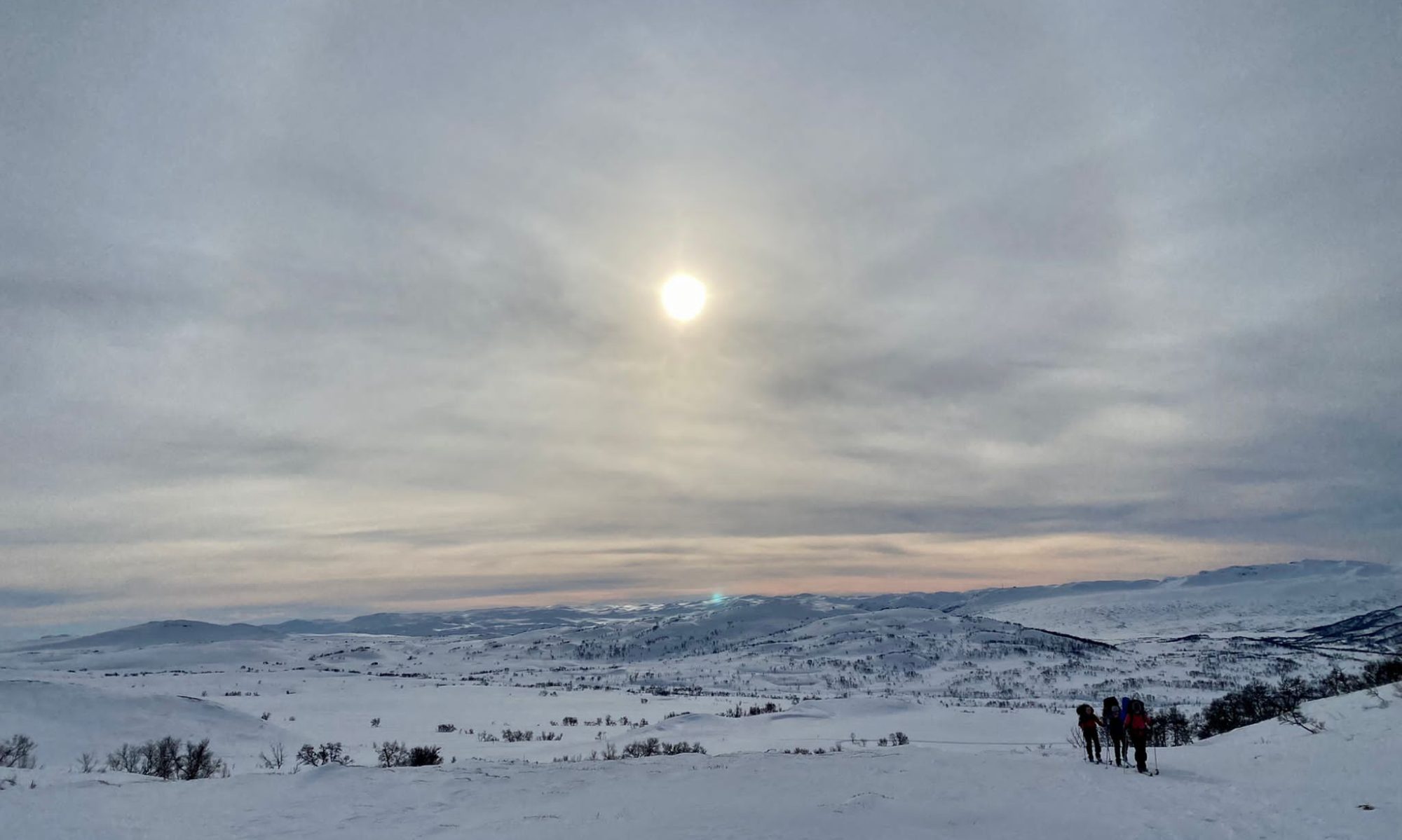In week 14, we did our first self-organised winter trip. Together with Anna and Antonia, I decided to go to Ådneram. We planned to stay for four nights in different DNT cabins with an average of around 10 km of skiing each day.
Our preparation consisted of a detailed Plan ABC, a packing list, and a meal plan. We split our preparation tasks and made sure that every one of us had a DNT membership. Moreover, we checked that the DNT cabins are open and that we don’t need special keys for them. We marked our route on a map that we printed beforehand.
On Saturday the 2nd of April, we left Kristiansand in the morning. We quickly started skiing after arriving in Ådneram, where we left the car at the DNT cabin. Pretty soon, we discovered that the snow conditions were not the best. It was super icy, and no amount of wax seemed to work. On top of that, we couldn’t find the sticks from DNT that mark the way. Luckily a lot of locals were around, so we followed them. A couple then told us that the road, which is usually covered with snow, has been cleared in order to allow cars to access the broken dam. It meant that our flat and straight route of about 8 km was gone for us. After taking our skis off and walking on the road for a while, we crossed a river to get to prepared tracks parallel to the road we wanted to go on. There we met a lot of other Norwegians who also struggled with the conditions. A woman told us that she had never taken her skis off that much before to get up the hills. And there were a lot of hills, which we kept sliding backwards on again and again. We just kept trying our best and kept moving, even at a very slow pace. Now and then, we met a group of scouts who we told that we wanted to go to the Taumevatn cabin. One of the leaders decided to approach us to ask us about our plan. He also asked us if we were prepared to travel in the dark since it was still a very long way to go. Furthermore, he wasn’t sure if he could find the way to the cabin or if there were any DNT sticks around. He then kindly offered that we could stay at their camp for the night if we didn’t make it all the way. Then the scout’s group moved on, and we sat down to assess our situation. A few things were clear to us: We didn’t want to spend the night outside! We wanted to have fun and be safe!
So, we turned around, but not after finding and thanking the scout’s group for their help and kind offer. On the mountain, we called DNT to book a room in the cabin in Ådneram, where we left Anna´s car. We had to hurry back to pick up the particular key for the cabin at the local store before 6 pm, which we managed to do. Falling onto the beds in the cabin, we were pleased with our decision even though I was a bit disappointed.
We spent the next days going on day trips that lasted around 7km. Sometimes on the prepared tracks, sometimes over frozen lakes and into the deep snow. The snow conditions didn’t improve much, but our ability to ski on icy snow got better and better and so did the weather. I started to try out skating and I´m now looking forward to renting proper cross-country skis to try it out more. We also taught Antonia some things that we learned on our previous trips such as the right layering of clothing, how to behave when crossing a lake and how many Kvikk lunsj to take on each day trip. We had a really great time and enjoyed our comfortable afternoons and nights in the cabin. We played games, baked banana bread and read a lot.
All in all, it was a lovely ski trip, and I had a lot of fun. Our original plan didn’t work out for different reasons, but I am proud of my group for adapting to the situation and finding another way. I learned that it is ok to fail and change plans to fit everyone´s abilities and wishes. I am also happy to leave the snow behind, and I´m looking forward to our spring trips.
